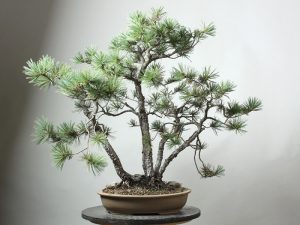Western White Pine
The western white pine is an ornamental species of tree that is blessed with an incredible endurance capacity. The beautiful coniferous tree has an open crown.
Scientific Classification
| Kingdom | Plantae |
| Division | Pinophyta |
| Class | Pinopsida |
| Order | Pinales |
| Family | Pinaceae |
| Genus | Pinus |
| Subgenus | P. subg. Strobus |
| Section | P. sect. Quinquefoliae |
| Subsection | P. subsect. Strobus |
| Scientific Name | Pinus monticola |
Quick Information
| Also Known as | California mountain pine, silver pine, Idaho pine |
| Tree Type | Pine |
| Identification | Size: 98-165 ft ( 29.8-50.2 ft) sometimes reaching up to 230 ft (70.1 ft) Trunk Diameter: 5-8 ft (1.5-2.4 m) Needles: Saw-like bluish-green needles sizing 2-5 in (5-13 cm) Cones: Slender and long cones sizing 4.7-12.5 in (11.9-31.7 cm); while closed cones are sizing 1.1-1.5 in (3-4 cm), open ones are 1.9-3.1 in (5-8 cm) Seeds: Brown seeds 0.1-0.2 in (0.4-0.7 cm) Twigs: Green and hairy and both lose by the second season Bark: Thin and smooth greenish-gray bark that changes to only gray and black at times with maturity Wood: Cream whitish to yellow |
| Distribution | Canada and United States (western) |
| Habitat | Moist valleys at low elevations |
| Hardiness Zone | 4 |
| Growth Rate | Fast |
| Lifespan | 400 years |
| Growing Conditions | Sun: It can withstand a wide range of conditions Soil: Sandy, rocky, dry, well-drained and nutrient-rich soil Water: It can thrive well in various water conditions |
| Drought Tolerant | Seeds have a low tolerance level |
| Disease & Pests | White pine blister rust-induced problems |
| Reproductive System | Vegetative reproduction |
| Propagation | Cuttings |
| Wildlife Value | The oily seeds are foods for nuthatches, jays, grosbeaks, crossbills, woodpeckers, squirrels and chipmunks. The wood and bark are useful for rodents and porcupines. Foliages are for deer and grouse. Large pines and needles are used for nesting and roosting |
| Uses | The soft and textured wood are used for window and door framesNative Americans used boiled bark to treat tuberculosis, stomach aches, sore and cuts |
| IUCN Conservation Status | Near Threatened |
Interesting Facts
- The scientific name ‘Monticola’ is a Latin word meaning ‘inhabiting mountains’.
- David Douglas, the famous botanist discovered and identified the species on Mount. St. Helens.
References
- https://www.idahoforests.org/content-item/western-white-pine/
- https://tidcf.nrcan.gc.ca/en/trees/factsheet/292
- https://www.for.gov.bc.ca/hfd/library/documents/treebook/westernwhitepine.htm
- https://depts.washington.edu/propplnt/Plants/Pinus_monticola.htm
- https://www.conifers.org/pi/Pinus_monticola.php
- https://www.fpl.fs.usda.gov/documnts/usda/amwood/258wwhpi.pdf
- http://nativeplantspnw.com/western-white-pine-pinus-monticola/
Published on April 8th 2019 by Sahana Kanjilal under Pine.
Article was last reviewed on 5th December 2024.










